Energy Recovery Systems
Overview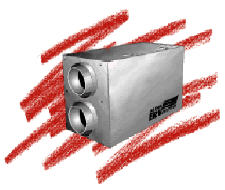
As houses have become more weather-tight, they also have become subject to a new set of potential problems commonly referred to as ‘sick building syndrome’.
It is very difficult to make a house ‘too tight’. However, for new construction where every effort has been made to seal-up the house, and for people who may be more sensitive to indoor air pollutants, an air-to-air heat exchanger is the energy management answer.
Some models also exchange moisture, and may be called ‘enthalpy’ units because they recover both sensible and latent (moisture) heat energy.
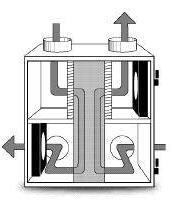 How they Work
How they Work
Two air streams – one leaving the house and one coming into the house, pass through opposite sides of a common heat exchanger. Most heat exchangers in residential units are made of various layers of plastic or light metal in a plate or honeycomb pattern. The heat from the air streams transfer through contact with the heat exchanger, but the air does not mix.
The exiting air may be collected from one or multiple locations. Typical exhaust points are bathrooms and kitchens. Return air may be introduced in one or multiple locations.
Some units run continuously, others may be activated by a switch, such as turning on the bathroom light.
Units that operate in humid climates are often equipped with a system that also removes moisture from the incoming air. This may be accomplished with a single desiccant wheel (such as with large commercial units) or a two-part technology that treats heat and moisture separately.
Keeping filters clean, condensate drains working and a clean heat exchanger are important operational considerations. Dirty units can cause more air quality problems than they resolve.
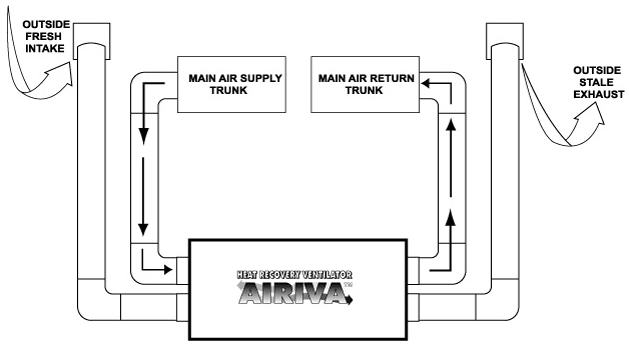
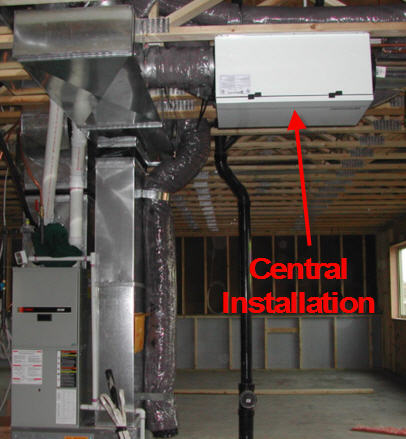 Operating Costs
Operating Costs
The operational costs of air-to-air heat exchangers are minimal; a fractional horse power fan is the only energy requirement. Changing/cleaning filters will be the primary operating expense.
The benefit of air exchangers is a better indoor air quality, without the higher cost of heating and/or cooling the outdoor air. (This assumes that the outdoor air is of better quality than the indoor air; this is not always the case in some urban areas.)
Air exchangers can be up to 80% efficient. They typically move about 200 cfm.
The cost of heating replacement air as a result of infiltration (drafts) is about 30% of a typical total heating cost. If a home is built VERY tight, and an air exchanger is utilized to provide fresh air at an 80% recovered efficiency, then it should be possible to save (80% times 30%) about 24% of the annual heating costs with an air to air heat exchanger AND A VERY TIGHT HOUSE.
However, adding an air exchanger to a ‘leaky’ house, would result in little to no savings and could actually increase heating/cooling costs.
More Information
For information about indoor air quality see Indoor Air Quality, Mold
Manufacturers
American Aldes Ventilation Corporation
4537 Northgate Court
Sarasota FL 34234-2124
Telephone: 941-351-3441
Go to the Aldes web site at www.americanaldes.com
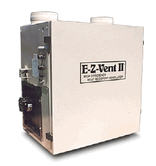 DesChamps Technologies
DesChamps Technologies
P.O. Box 220 45 NB School Rd.
Natural Bridge Station, VA 24579
Telephone: 540-291-1111
Go to the DesChamps web site at www.deschamps.com
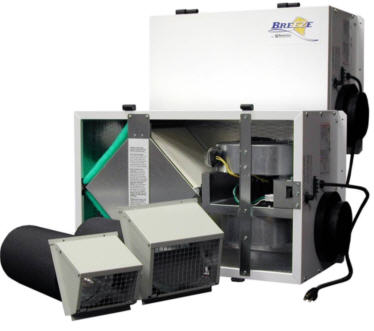 RenewAire LLC
RenewAire LLC
4510 Helgesen Drive
Madison, WI 53718
Telephone: 800-627-4499
Go to the RenewAire web site atwww.renewaire.com
Airiva
See www.SmartHome.Com, an on-line store with a lot of good product information.
Source: Text Bob Fegan 12/2008; graphics and product information from the web sites referenced and linked above. Rev 11/2005;
© 2008 Energy Solutions Center 400 N. Capitol Street NW
Washington, DC 20001 All rights reserved. Legal Contact our webmaster
